Hyundai Bayon vs Suzuki Swift – Which model is better for everyday use?
Two cars, one duel: Hyundai Bayon meets Suzuki Swift.
Which one wins in performance, efficiency and value for money? Find out now!
Costs and Efficiency:
When it comes to price and running costs, the biggest differences usually appear. This is often where you see which car fits your budget better in the long run.
Suzuki Swift has a somewhat advantage in terms of price – it starts at 17100 £, while the Hyundai Bayon costs 20100 £. That’s a price difference of around 2915 £.
Fuel consumption also shows a difference: Suzuki Swift manages with 4.40 L and is therefore distinct more efficient than the Hyundai Bayon with 5.40 L. The difference is about 1 L per 100 km.
Engine and Performance:
Power, torque and acceleration are the classic benchmarks for car enthusiasts – and here, some clear differences start to show.
When it comes to engine power, the Hyundai Bayon has a a bit edge – offering 100 HP compared to 82 HP. That’s roughly 18 HP more horsepower.
In terms of top speed, the Hyundai Bayon performs hardly perceptible better – reaching 179 km/h, while the Suzuki Swift tops out at 170 km/h. The difference is around 9 km/h.
There’s also a difference in torque: Hyundai Bayon pulls significantly stronger with 200 Nm compared to 112 Nm. That’s about 88 Nm difference.
Space and Everyday Use:
Beyond pure performance, interior space and usability matter most in daily life. This is where you see which car is more practical and versatile.
Both vehicles offer seating for 5 people.
In curb weight, Suzuki Swift is barely noticeable lighter – 1069 kg compared to 1170 kg. The difference is around 101 kg.
In terms of boot space, the Hyundai Bayon offers clearly perceptible more room – 411 L compared to 265 L. That’s a difference of about 146 L.
In maximum load capacity, the Hyundai Bayon performs a bit better – up to 1205 L, which is about 225 L more than the Suzuki Swift.
When it comes to payload, Hyundai Bayon noticeable takes the win – 465 kg compared to 296 kg. That’s a difference of about 169 kg.
Who comes out on top?
Overall, the Hyundai Bayon shows itself to be is largely superior and secures the title of DriveDuel Champion.
It convinces with the more balanced overall package and proves to be the more versatile choice for everyday use.
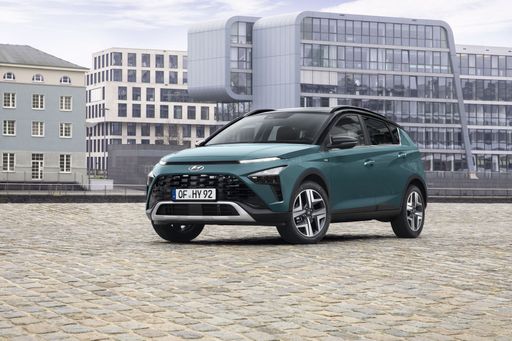
Hyundai Bayon
Hyundai Bayon
The Hyundai Bayon is a compact crossover that effortlessly merges practicality with modern design. Its sleek exterior and spacious interior make it an ideal choice for urban settings and longer journeys alike. With a focus on comfort and connectivity, this vehicle provides a smooth driving experience paired with advanced technology features.
details @ hyundai.news
@ hyundai.news
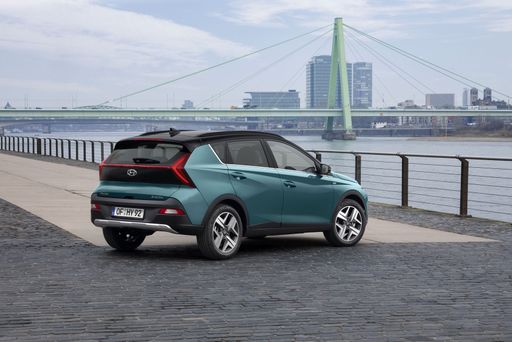 @ hyundai.news
@ hyundai.news
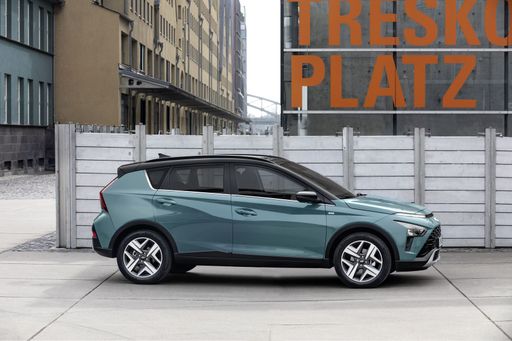 @ hyundai.news
@ hyundai.news
 @ hyundai.news
@ hyundai.news
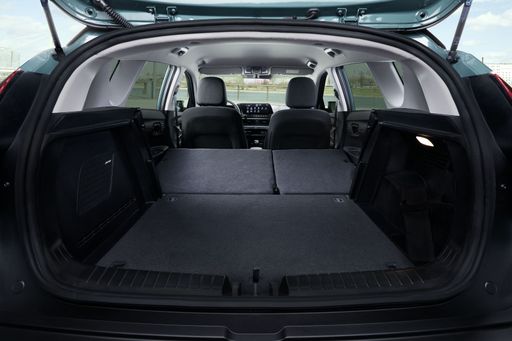 @ hyundai.news
@ hyundai.news
Suzuki Swift
The Suzuki Swift is a compact hatchback that offers a spirited driving experience, making it a popular choice for city dwellers. With its sleek design and agile handling, it effortlessly navigates urban streets while providing a comfortable interior with ample space for passengers and luggage. Its economical fuel consumption and reliable performance make it a practical option for those seeking a balance between style and functionality.
details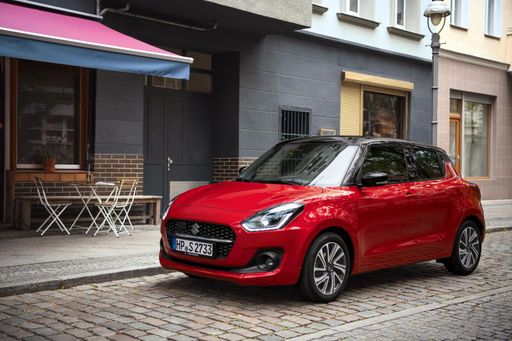 @ Suzuki
@ Suzuki
 @ Suzuki
@ Suzuki
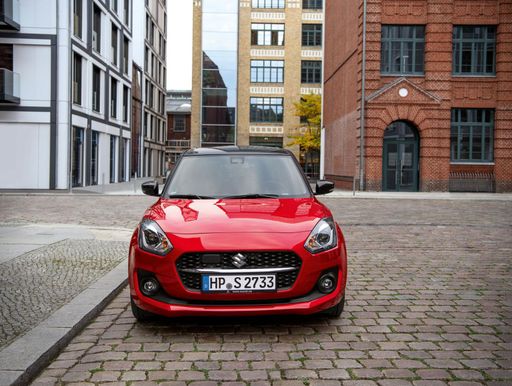 @ Suzuki
@ Suzuki
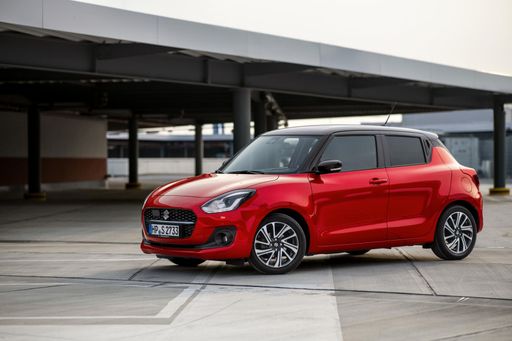 @ Suzuki
@ Suzuki
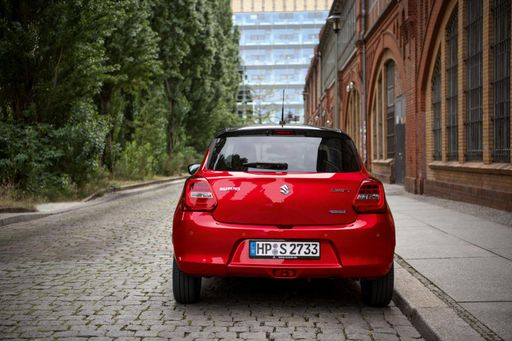 @ Suzuki
@ Suzuki
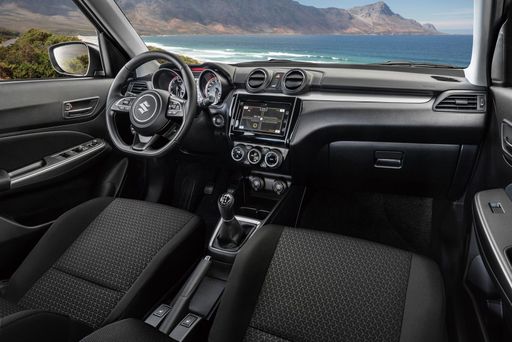 @ Suzuki
@ Suzuki

|

|
|
|
|
Costs and Consumption |
|
|---|---|
|
Price
20100 - 25800 £
|
Price
17100 - 21200 £
|
|
Consumption L/100km
5.4 - 5.5 L
|
Consumption L/100km
4.4 - 4.9 L
|
|
Consumption kWh/100km
-
|
Consumption kWh/100km
-
|
|
Electric Range
-
|
Electric Range
-
|
|
Battery Capacity
-
|
Battery Capacity
-
|
|
co2
124 g/km
|
co2
98 - 110 g/km
|
|
Fuel tank capacity
40 L
|
Fuel tank capacity
37 L
|
Dimensions and Body |
|
|---|---|
|
Body Type
SUV
|
Body Type
Hatchback
|
|
Seats
5
|
Seats
5
|
|
Doors
5
|
Doors
5
|
|
Curb weight
1170 - 1195 kg
|
Curb weight
1069 - 1145 kg
|
|
Trunk capacity
411 L
|
Trunk capacity
265 L
|
|
Length
4180 mm
|
Length
3860 mm
|
|
Width
1775 mm
|
Width
1735 mm
|
|
Height
1500 mm
|
Height
1485 - 1510 mm
|
|
Max trunk capacity
1205 L
|
Max trunk capacity
980 L
|
|
Payload
460 - 465 kg
|
Payload
282 - 296 kg
|
Engine and Performance |
|
|---|---|
|
Engine Type
Petrol
|
Engine Type
Petrol MHEV
|
|
Transmission
Manuel, Automatic
|
Transmission
Manuel, Automatic
|
|
Transmission Detail
Manual Gearbox, Dual-Clutch Automatic
|
Transmission Detail
Manual Gearbox, CVT
|
|
Drive Type
Front-Wheel Drive
|
Drive Type
Front-Wheel Drive, All-Wheel Drive
|
|
Power HP
100 HP
|
Power HP
82 HP
|
|
Acceleration 0-100km/h
11.3 - 12.4 s
|
Acceleration 0-100km/h
-
|
|
Max Speed
176 - 179 km/h
|
Max Speed
160 - 170 km/h
|
|
Torque
172 - 200 Nm
|
Torque
112 Nm
|
|
Number of Cylinders
3
|
Number of Cylinders
3
|
|
Power kW
74 kW
|
Power kW
61 kW
|
|
Engine capacity
998 cm3
|
Engine capacity
1197 cm3
|
General |
|
|---|---|
|
Model Year
2024
|
Model Year
2024
|
|
CO2 Efficiency Class
D
|
CO2 Efficiency Class
C
|
|
Brand
Hyundai
|
Brand
Suzuki
|
What drivetrain options does the Hyundai Bayon have?
The Hyundai Bayon is available as Front-Wheel Drive.
The prices and data displayed are estimates based on German list prices and may vary by country. This information is not legally binding.
